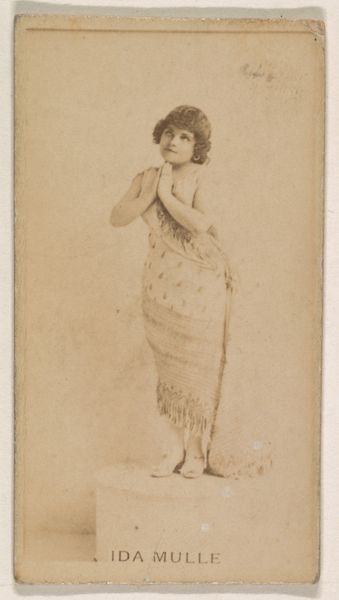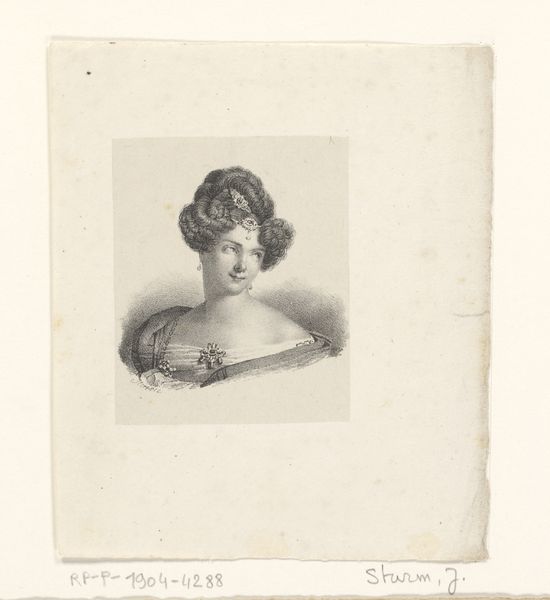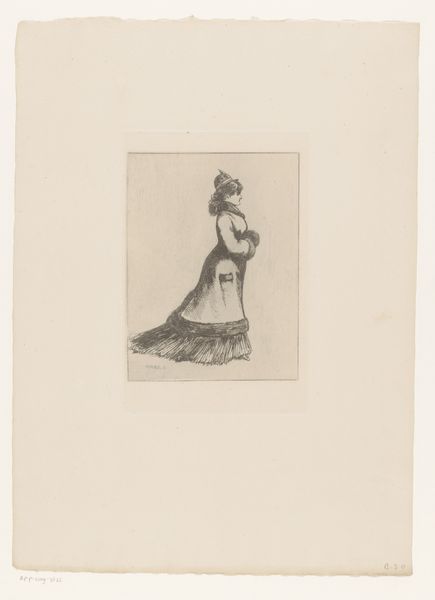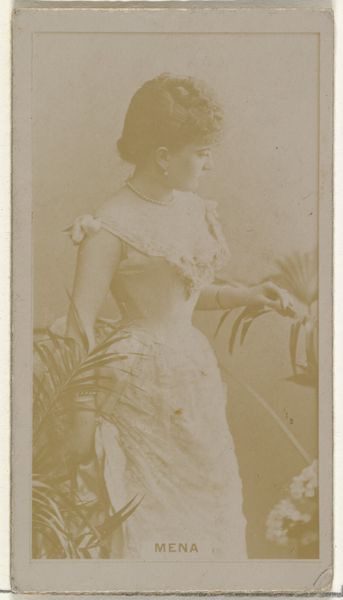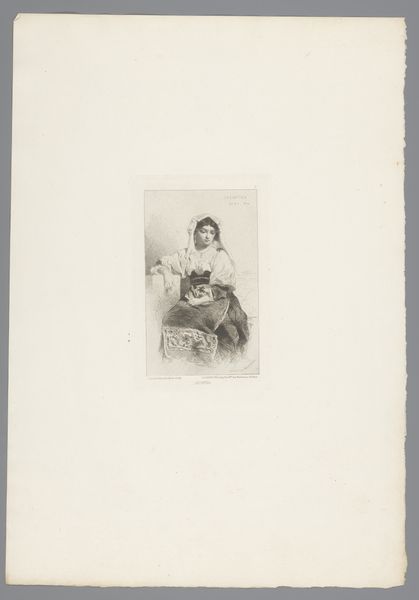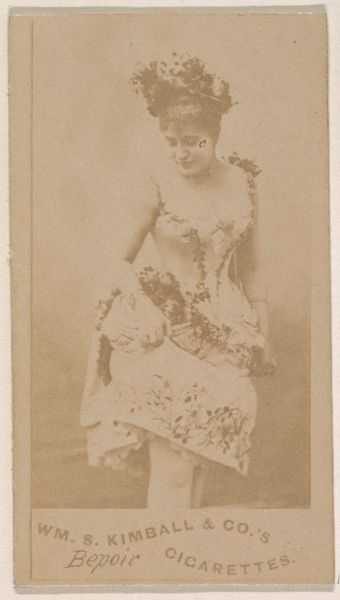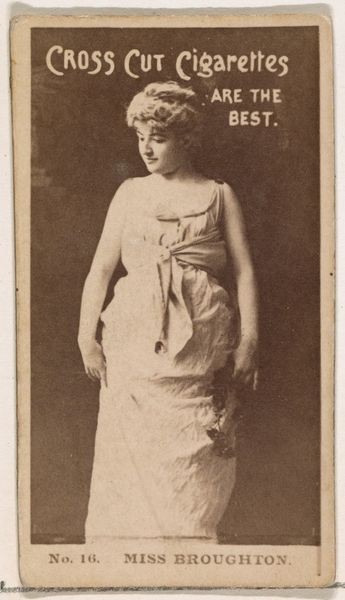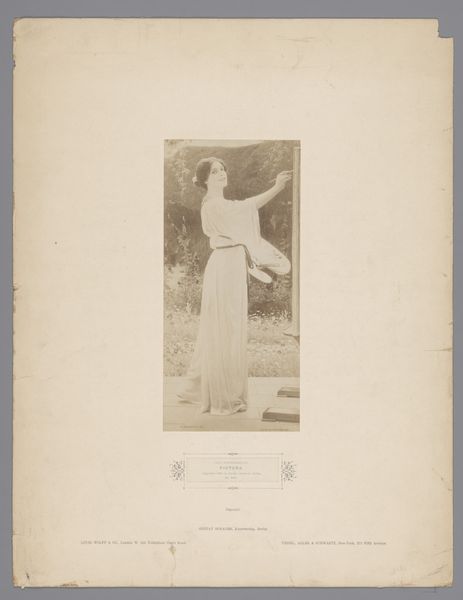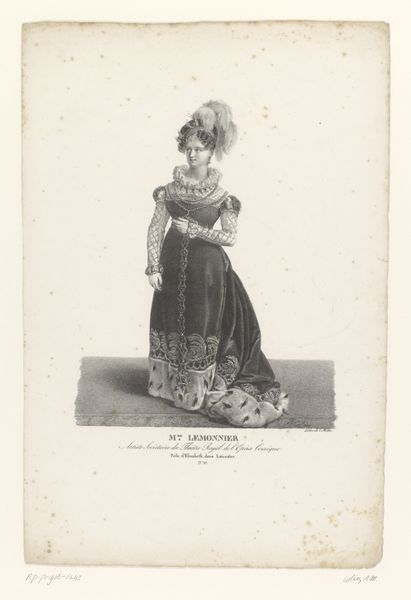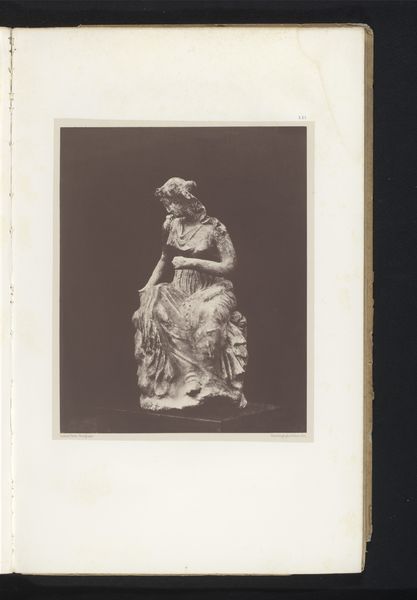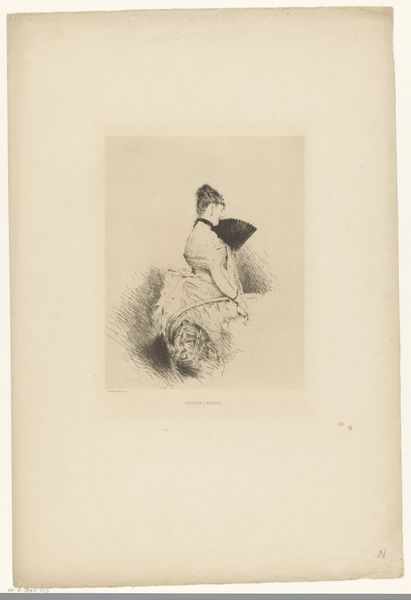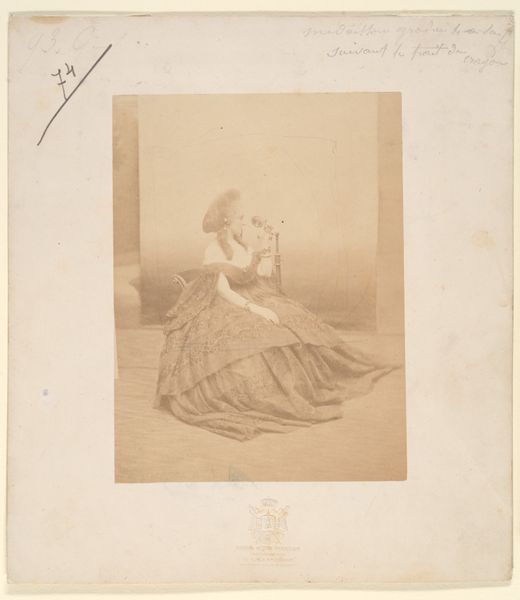
drawing, print, etching, paper, engraving
#
portrait
#
pencil drawn
#
drawing
# print
#
etching
#
figuration
#
paper
#
intimism
#
engraving
#
realism
Dimensions: height 246 mm, width 183 mm
Copyright: Rijks Museum: Open Domain
Editor: This is Giuseppe de Nittis’s "Portret van een vrouw genaamd Gabrielle," made in 1876. It’s an etching on paper – quite delicate. I'm struck by the fine lines, especially in her dress. It gives the impression of intricate textile work. What’s your perspective? Curator: It's important to look at the material reality of etching in the 1870s. Think about the labor involved: the preparation of the metal plate, the meticulous application of the ground, the controlled biting of the acid, and then the printing process. How does understanding this impact how we see it, beyond just a "delicate" image? Editor: I hadn't really considered the physical process so much. So, knowing the labor changes… what, exactly? Curator: Well, the act of creation moves into the foreground. Realism was popular, yes, but consider this work not just as a ‘realistic’ representation but an outcome of industrial changes affecting printmaking. Was De Nittis, by employing etching, engaging with or critiquing these new modes of production? Is he elevating the "low art" of printmaking? Editor: That’s a good point. Thinking about the economic and social context, etching made art more accessible through reproducibility. But does this accessibility change our view of "high art"? Curator: Exactly! Think about how prints were bought and sold, who consumed them. How did these dynamics impact the status of the artwork? Does the labor intensity of the method elevate, diminish, or transform this piece’s potential reception in 1876 and how might it do so today? Editor: So it is as much about the labor involved as it is the subject portrayed. Curator: Indeed! Considering the print’s existence as a commodity reveals complex layers beyond simply being a "portrait of a woman". Editor: That's fascinating. I'll definitely pay more attention to the processes behind art-making in the future. Thanks!
Comments
No comments
Be the first to comment and join the conversation on the ultimate creative platform.
